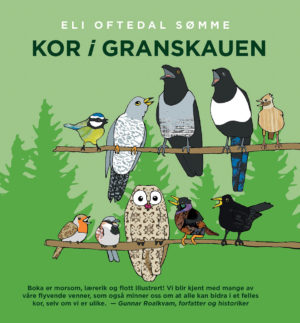Volume 4 of the Handbook of the Birds of the World covers six bird families across four orders, including pigeons, doves, parrots, cockatoos, cuckoos, sandgrouse, and turacos. With 70 color plates, 236 photographs, 837 distribution maps, and nearly 7,000 references, this volume features the most species (837) of any non-passerine volume. Key taxonomic discussions address issues like the separation of cockatoos from parrots. Foreword by Jürgen H. Haffer on species concepts in ornithology.
Volume 4 of the Handbook of the Birds of the World explores six major bird families across four orders, showcasing some of the most varied and colorful species in the avian world. This volume covers 837 species, making it the largest non-passerine volume in terms of species count in the HBW series. It begins with a foreword by Jürgen H. Haffer, addressing species concepts and species limits in ornithology, setting the tone for the depth of information that follows.
The volume covers key families of global importance: pigeons and doves (Columbidae), parrots (Psittacidae), cuckoos (Cuculidae), and their relatives. The sheer diversity of these groups is illustrated by the fact that pigeons and doves alone consist of 309 species, while parrots make up 322 species. These two families, alongside cuckoos (136 species), are represented on every continent, making this volume a critical reference for ornithologists and bird enthusiasts worldwide.
The sandgrouse (Pteroclidae), native to the arid regions of Africa, southern Europe, and southwest Asia, is featured alongside the striking cockatoos (Cacatuidae), which are relatives of parrots, found in Southeast Asia and Australia. Additionally, the unique turacos (Musophagidae), inhabitants of sub-Saharan Africa, add further interest to this volume with their vivid plumage and intriguing behaviors.
Among the key taxonomic discussions in this volume is the treatment of cockatoos as a separate family (Cacatuidae) rather than being lumped together with parrots, and the ongoing refinement of genus-level classifications within the Psittacidae family. This volume also deals with nomenclature issues, such as the proper naming conventions for fig-parrots and other species.
This volume offers 70 meticulously illustrated color plates, 236 vivid color photographs, and 837 detailed distribution maps. Thirteen figures and tables further enhance the reader’s understanding of bird distribution and behavior. As always, the species accounts are comprehensive, covering descriptions, habitat, behavior, feeding, breeding, and conservation status. The volume contains nearly 7,000 bibliographical references, making it a treasure trove of information for further research.
| Order PTEROCLIFORMES | |
| Family Pteroclidae (Sandgrouse) | E. de Juana |
| Order COLUMBIFORMES | |
| Family Columbidae (Pigeons and Doves) | L.F. Baptista, P.W. Trail & H.M. Horblit |
| Order PSITTACIFORMES | |
| Family Cacatuidae (Cockatoos) | I. Rowley |
| Family Psittacidae (Parrots) | N.J. Collar |
| Order CUCULIFORMES | |
| Family Musophagidae (Turacos) | D.A. Turner |
| Family Cuculidae (Cuckoos) | R.B. Payne |
Key Features:
- 70 colour plates and 236 high-quality photographs.
- 837 distribution maps.
- Close to 7,000 bibliographical references.
- Largest non-passerine volume with 837 species, including pigeons, doves, parrots, and cuckoos
- Focus on conservation status and species at risk, especially within Psittacidae (parrots).
This volume, with its extensive coverage of colorful and fascinating bird families, is an indispensable resource for ornithologists, birdwatchers, and conservationists alike.





